
By Raymond O’Brocki
In January 2019, the governmental voting body of the International Code Council (ICC) approved changes to the International Fire Code (IFC), 2021 edition, that will aid in safeguarding construction sites. Although construction fires—including buildings under major renovation and demolition—account for about 1.7 percent of the nation’s annual structure fire responses and about 3.2 percent of annual fire losses,1 the estimated economic impact is $310 million per year.(1) Construction site fires affect not only the building under construction, they can cause a disproportionate negative effect, including the following:
- Project abandonment.
- Economic development impact.
- Financial loss and increased insurance costs.
- Environmental damages.
- Fire Service depletion for other incidents.
- Water supplies.
- Traffic and area interruptions.
Daily Fire Safety Inspections
The most impactful change regarding construction fire safety is in the IFC’s Chapter 33, requiring the construction “site safety director” (formerly named the “fire prevention program superintendent”) to conduct daily fire safety inspections at the project site. These daily inspections must include the exterior and interior of buildings under construction until the certificate of occupancy is issued.
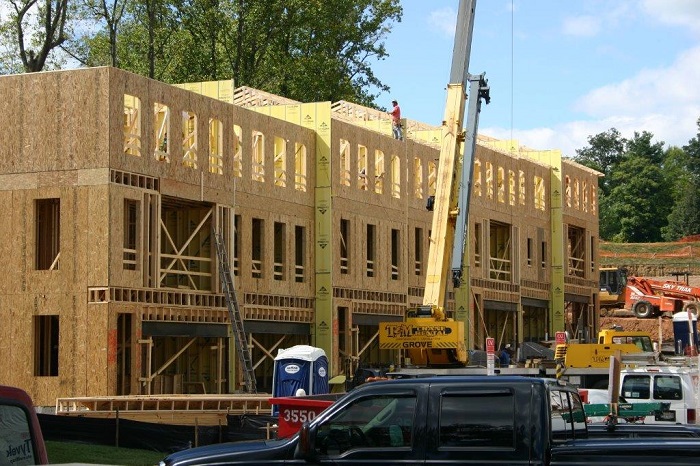
(1) Type V townhouses under construction. (Photos courtesy of the Construction Fire Safety Coalition.)
Daily inspections must be documented, and records must be made available immediately on request of the fire official. Failure toconduct or document daily inspections can result in a violation. On the third offense, the fire official can issue a “stop work” order until the fire code official receives “satisfactory assurances” of future compliance.
Daily Inspection Requirements
The following are requirements of these daily fire inspections:
- Inspect hot work areas and ensure hot work is being conducted according to the hot work plan.
- Inspect all temporary heating equipment, ensuring it is away from combustibles.
- Ensure combustible trash and debris are removed from the nonwork areas.
- Ensure temporary wiring does not have exposed conductors.
- Ensure flammable liquids and hazardous materials are being stored properly in approved locations.
- Inspect fire access roads to confirm they are free of obstructions.
- Confirm fire hydrants are unobstructed and “clearly visible.”
- Ensure standpipes are in service and go up with the building within one floor of the highest construction level.
- Ensure portable fire extinguishers are in service and properly spaced.
One of the code changes also relocates Section 3308 in Owner’s Responsibility for Fire Protection to Section 3303 so that these important requirements are in the front of Chapter 33 in Fire Safety During Construction and Demolition.
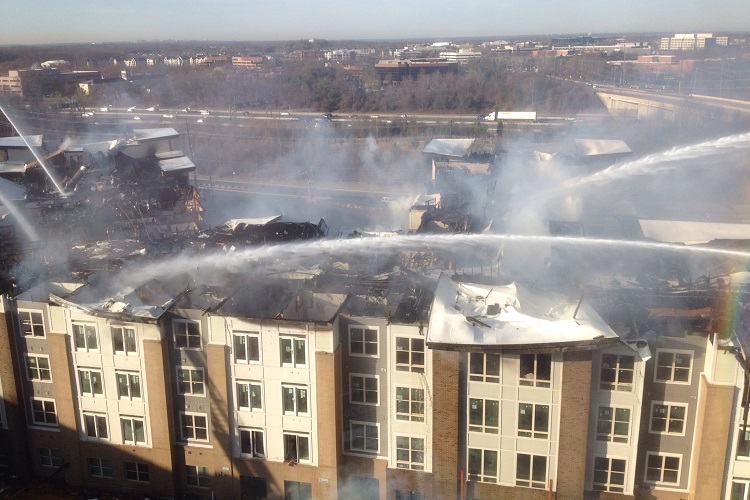
(2) Fire destroys a residential building under construction in Rockville, Maryland.
Fire Watch Requirements
The 2021 IFC will make a fire watch mandatory for buildings more than 40 feet in height or with an aggregate area exceeding 50,000 square feet. It was felt that “these buildings are large enough to create a significant loss to the community, endanger firefighters, and consume resources…if the building burns.”2
Another change allows fire watch personnel to also serve as security. Fire watch personnel must be trained in the use of portable fire extinguishers and fire reporting. The fire watch must have at least one means to notify the fire department. Fire watch personnel must also keep a record of all time periods of duty including a log of all patrols and the times and locations that buildings were entered and inspected.
Cooking Separation Requirement
According to the National Fire Protection Association (NFPA), the leading cause of construction fires is cooking. Twenty-seven percent of all construction fires were caused by cooking equipment. (1) The designated cooking area must be at least 10 feet from combustible materials with signage indicating a “designated cooking area.” Cooking outside this approved area is prohibited.

(3) A four-story Type V construction apartment building.
Site Safety Plan Requirements
A “site safety plan” will be required and must be submitted prior to issuance of a building permit. New code sections outline site safety plan required content as follows:
- Name and contact information of the site safety director.
- Documentation of training.
- Procedures for emergency notification.
- Fire department vehicle access.
- Location of fire protection equipment and systems.
- Smoking and cooking policy, including designated areas to be used.
- The location and safety considerations for temporary heating equipment.
- Hot work permit plan.
- Plans for control of combustible waste material.
- Locations and storage methods of flammable and combustible liquids and other hazardous materials.
- Provisions for site security.
- Changes that affect the site safety plan.
- Other site-specific information required by the fire code official.
Site Safety Director Responsibilities
According to the 2021 IFC, the site safety director must have qualifications “specific to their roles and responsibilities.” The training and qualifications must be made available to the fire official on request. No specific training or qualifications are enumerated in the code for the position of site safety director.
Duties of the site safety director include ensuring compliance with the site safety plan, being responsible for the guard service, training of fire watch personnel, ensuring all fire protection equipment is operational, ensuring hot work procedures are followed, planning for all system impairments, and maintaining all required records.
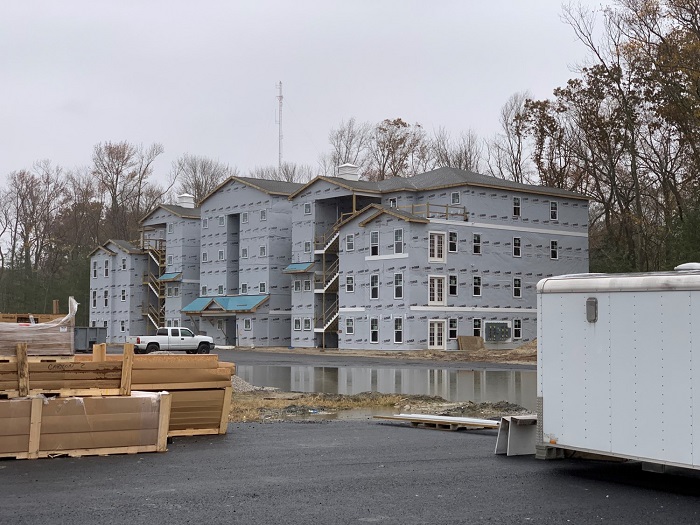
(4) A garden apartment under construction in Long Neck, Delaware.
Moving Forward
Although these code changes are a step in the right direction, unless fire departments actively enforce them, construction fires will continue. The primary problem is that inspecting construction sites is not a traditional role for the fire service. Annual inspections are triggered by issuance of a certificate of occupancy.
Building inspectors who actively inspect during construction are looking at approved plans and matching them against the “as-built” structure. Fire safety inspections are not a traditional function for building inspectors; it is this “gap” in responsibility that has led to unsafe practices and subsequent construction fires that make the news more often than they should.
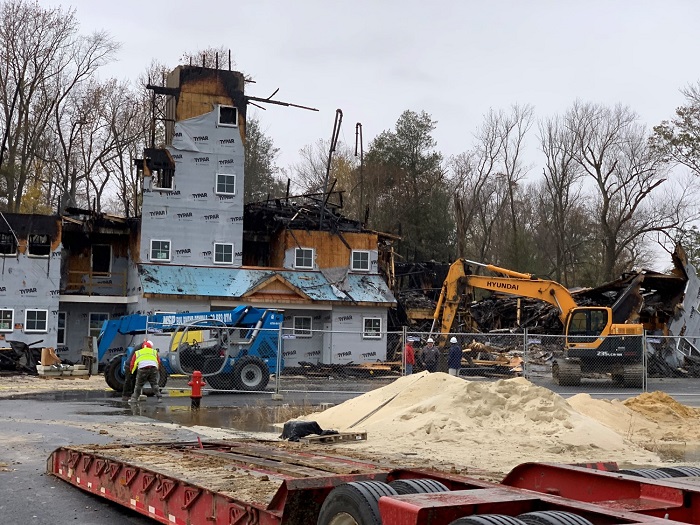
(5) Fire destroys a garden apartment under construction in Long Neck, Delaware
Construction Fire Safety Coalition
The Construction Fire Safety Coalition was created to educate public and private sectors on how to reduce the frequency and severity of fires during construction. Its intent is to encourage building departments, fire departments, and developers to see construction site safety as a partnership. The Construction Fire Safety Coalition is open to any interested persons or organizations that wish to help reduce the frequency and severity of construction fires. There is no financial commitment associated with becoming a member. Coalition members will be asked to align on best construction site fire prevention practices and agree to promote awareness of the coalition.
For more information, please visit www.constructionfiresafety.org.
References
- Campbell, Fires in Structures Under Construction, Undergoing Major Renovation, or Being Demolished, National Fire Protection Association (NFPA) 2017.
- 2018 ICC Public Comment Agenda, p.1058
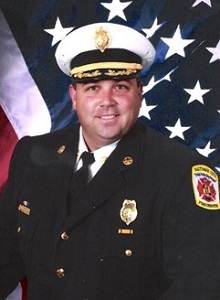 Raymond O’Brocki, CBO, is the manager of fire service relations for the American Wood Council. He was previously the chief building official for the City of Rockville, Maryland. O’Brocki was also the assistant chief (ret.) of the Baltimore (MD) Fire Department until 2013. He was appointed fire marshal for Baltimore in 2008. O’Brocki has also served on the Maryland State Child Care Advisory Council, the Maryland State Fire Code Update Committee, the steering committee for the Mid-Atlantic Life Safety Conference, the National Fire Protection Association’s (NFPA’s) Urban Fire Safety Task Force and is on the NFPA 1 technical committee. He is the administrator of the Construction Fire Safety Coalition, a graduate of the University of Baltimore School of Law, and a licensed attorney.
Raymond O’Brocki, CBO, is the manager of fire service relations for the American Wood Council. He was previously the chief building official for the City of Rockville, Maryland. O’Brocki was also the assistant chief (ret.) of the Baltimore (MD) Fire Department until 2013. He was appointed fire marshal for Baltimore in 2008. O’Brocki has also served on the Maryland State Child Care Advisory Council, the Maryland State Fire Code Update Committee, the steering committee for the Mid-Atlantic Life Safety Conference, the National Fire Protection Association’s (NFPA’s) Urban Fire Safety Task Force and is on the NFPA 1 technical committee. He is the administrator of the Construction Fire Safety Coalition, a graduate of the University of Baltimore School of Law, and a licensed attorney.

